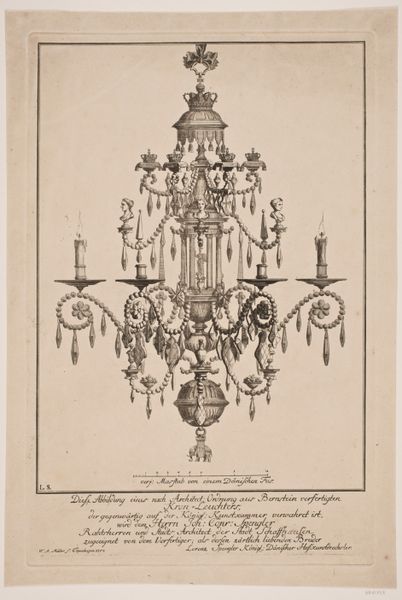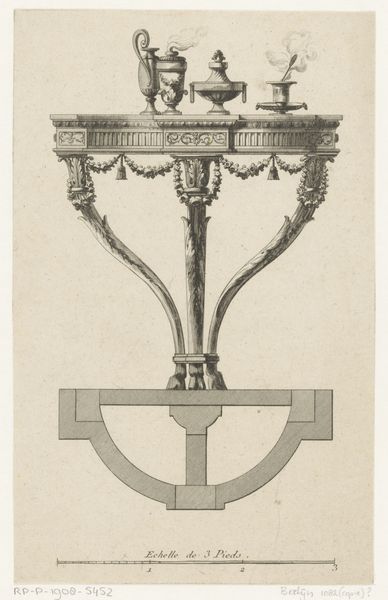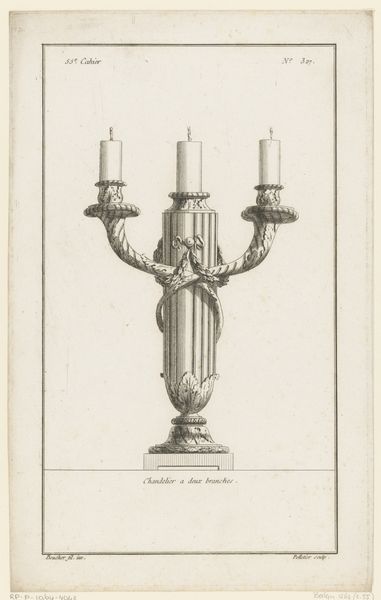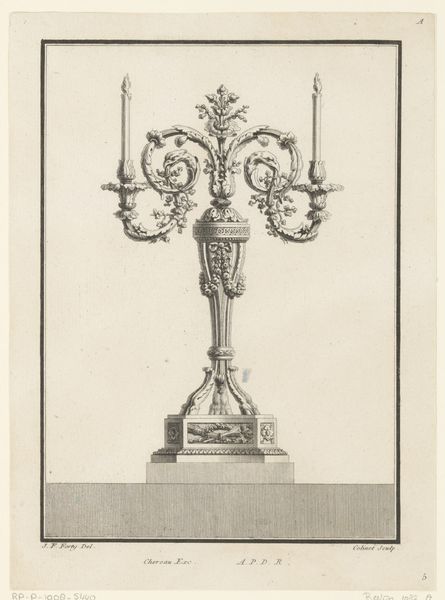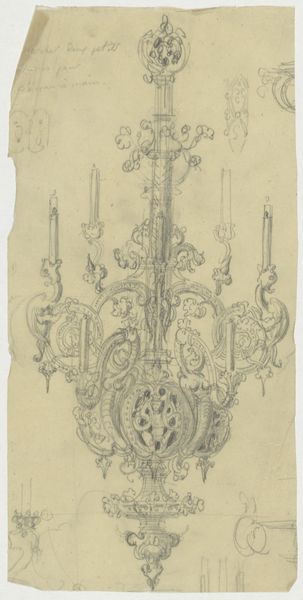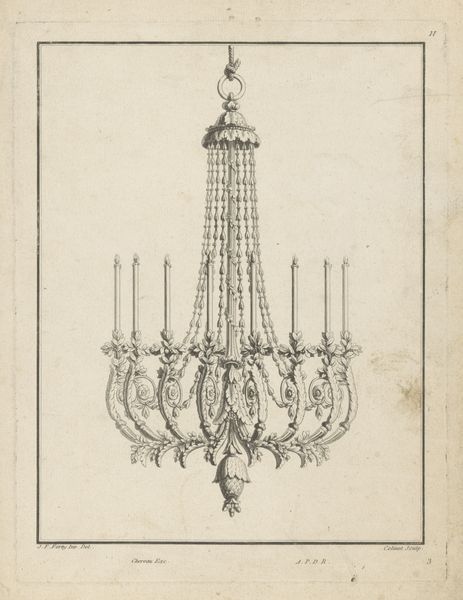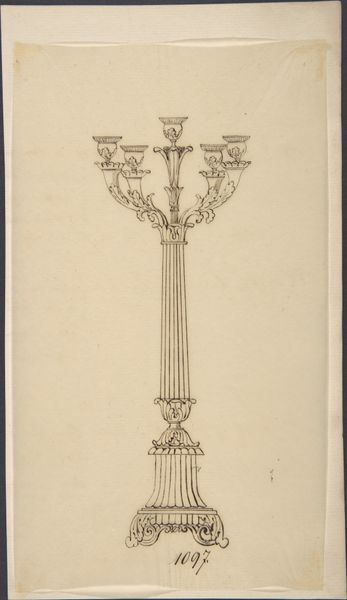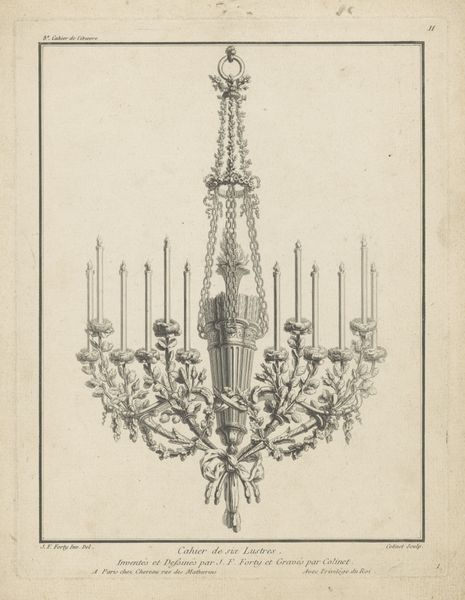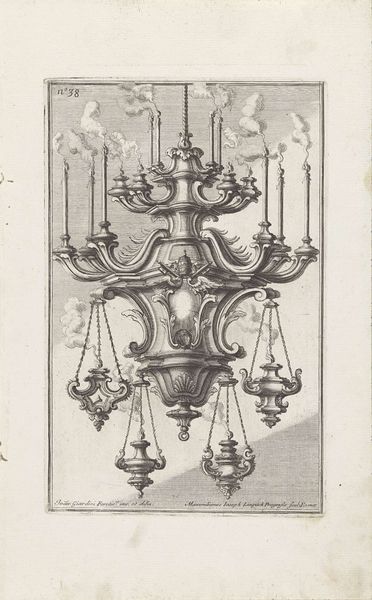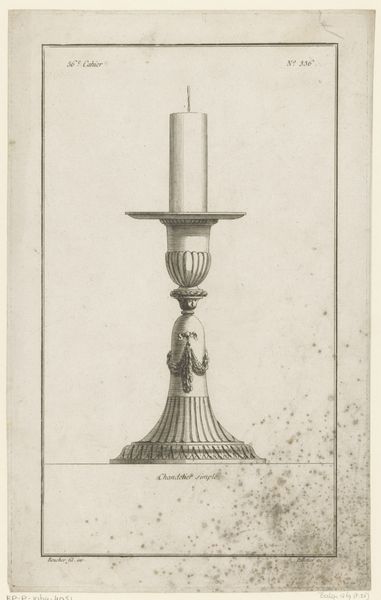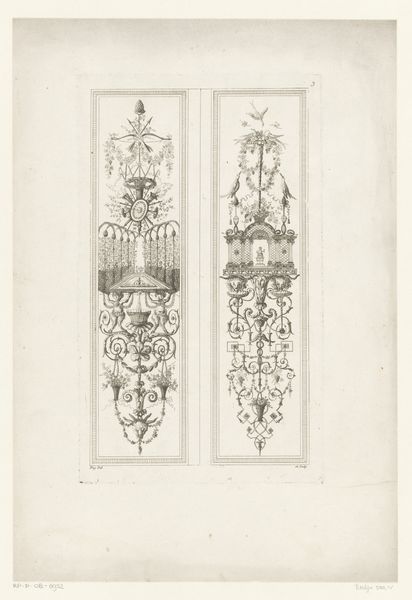
drawing, graphite, pen
#
drawing
#
aged paper
#
toned paper
#
old engraving style
#
personal sketchbook
#
ink drawing experimentation
#
romanticism
#
pen-ink sketch
#
pen work
#
graphite
#
sketchbook drawing
#
pen
#
storyboard and sketchbook work
#
decorative-art
#
sketchbook art
Dimensions: height 253 mm, width 209 mm
Copyright: Rijks Museum: Open Domain
Curator: Here we have a drawing attributed to Franz Jakob Kreuter, titled "Een kandelaber, hekwerken en vloeren," dating from around 1835 to 1860. It combines graphite and pen work. My first impression is a very ordered sketch, precise even. Editor: Yes, that control is evident, but the material speaks to a different reality. Notice the aged, toned paper. It whispers of the time and craft invested in the creation itself, reminding us this wasn't a mass-produced item, but likely a preparatory drawing for a physical object, imbued with value through labor. Curator: I see what you mean. And consider how light functions symbolically here. The kandelaber isn't merely functional. The five candles suggest the illumination of knowledge, possibly enlightenment ideals popular in the Romantic period. Light overcomes darkness, knowledge triumphs over ignorance. Editor: The light you describe would only be obtained from a certain arrangement and crafting of specific raw materials that had to be obtained, processed and shaped! We also can't overlook the architectural and design context. Those meticulously rendered floor and fence patterns signal status, class, consumption of decorative goods. Curator: True, these recurring decorative motifs across different surfaces also weave a sense of cultural continuity. The stylized palmettes and meanders link back to classical precedents. They function as a visual shorthand for established authority and refinement, meant to create a psychological effect on those who encountered them. Editor: Don't you wonder what was Kreuter's access to certain raw materials and artisan skills at the time he produced this drawing? Also who this piece of paper would've circulated for; what would that say about the possible consumer network for ornamental and practical artwork at the time? Curator: That’s a great point; I’d be fascinated to discover what stories lay beneath this sketchbook work. I think these patterns also create a sense of harmony and order and control for a Romanticism Era seeking these values. Editor: Yes, it’s that constant dialectic: a push-and-pull between cultural expressions, social relations, and how all of this would create symbolic value and social identity around specific commodities. Curator: Well, looking closely at these details certainly deepens my appreciation for this complex work. Editor: Indeed. Considering materiality and symbolic layers allows us to understand both its immediate visual appeal and enduring cultural echoes.
Comments
No comments
Be the first to comment and join the conversation on the ultimate creative platform.
